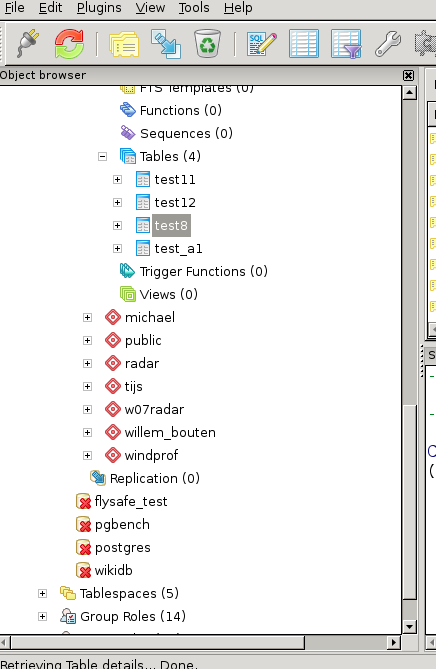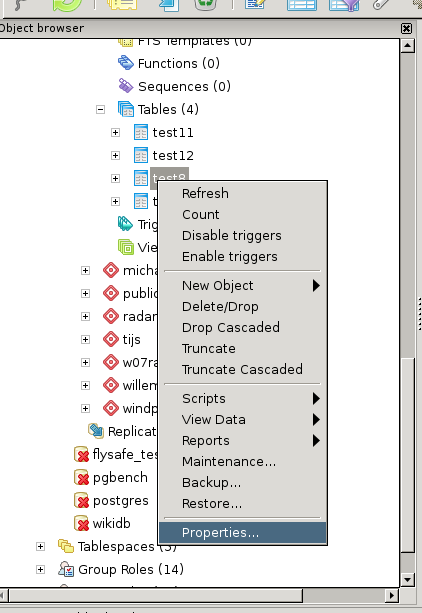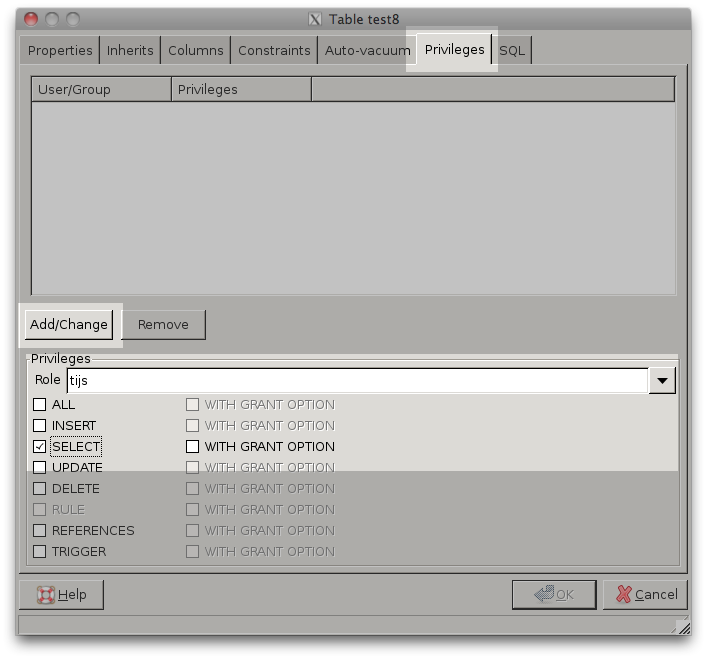Difference between revisions of "Annotation tables"
(→Uploading tables) |
(→Creating table templates) |
||
| Line 4: | Line 4: | ||
== Creating table templates == | == Creating table templates == | ||
| + | |||
To create a new table template, go to the page 'Templates', which shows an overview of existing templates. Follow the link called "Create a new template". | To create a new table template, go to the page 'Templates', which shows an overview of existing templates. Follow the link called "Create a new template". | ||
| Line 14: | Line 15: | ||
You can start defining columns after you click on "Create template". This will also save the template name and description. | You can start defining columns after you click on "Create template". This will also save the template name and description. | ||
| − | + | == Defining template columns == | |
Each column in a template definition tells the system which columns to create when you upload a new file into the database. So the names of the columns are used as table column names later on. This means that for each column: | Each column in a template definition tells the system which columns to create when you upload a new file into the database. So the names of the columns are used as table column names later on. This means that for each column: | ||
| Line 29: | Line 30: | ||
To delete an existing column, click on the "Delete column" button next to the row. | To delete an existing column, click on the "Delete column" button next to the row. | ||
| − | |||
== Editing an existing template == | == Editing an existing template == | ||
Revision as of 08:16, 3 November 2011
Contents
User annotation tables
Introduction
Creating table templates
To create a new table template, go to the page 'Templates', which shows an overview of existing templates. Follow the link called "Create a new template".
Before you can define the fields of the template, you must give the template a name and a description.
- Choose the name such that you can easily find it back.
- The description should be a description of what the template is for, not what the template will contain (as this will be visible when you define the columns). It has a mimimum of 40 characters.
You can start defining columns after you click on "Create template". This will also save the template name and description.
Defining template columns
Each column in a template definition tells the system which columns to create when you upload a new file into the database. So the names of the columns are used as table column names later on. This means that for each column:
- the name must be a valid table column name, that is, it must start with a letter and it must contain no spaces or special characters;
- the type must a valid database type;
- the checkbox "primary key" defines whether the column will be used as a primary key.
The primary key can be one column or a combination of columns. In a database table, the primary key field or combination of each table row must be unique. For the analysis of GPS tracks, a good combination would be the 'datetime' and the 'device_info_serial' fields. Every database table must have at least one column marked as a primary key.
To add a new template column, fill in the values on the last or only (and empty) row of the overview, then click on the button "Add column" next to it.
To modify existing columns, edit the fields of the columns, then click on "Update columns" below the overview.
To delete an existing column, click on the "Delete column" button next to the row.
Editing an existing template
If you want to edit an existing template:
- Go to the template overview page by selecting the "Templates" tab in
the menu.
- Click on the "edit" link next to the template you want to edit. You can
only edit your own templates.
- edit the fields in the same way as when creating a new template.
Creating a database table by uploading a CSV file
In the current version, you can create database tables from CSV files. Before you can upload a file, you must have created a template in which each column corresponds with a column in your CSV file.
To upload a file into a new database table, go to the "Upload table" page in the Annotation management pages. This will show you an upload form.
First, select the file you want to upload by clikcing on the "browse" button.
Second, enter a name for the new database table. This must be a valid database table name, so it must start with a letter, contain no spaces or special characters, and be no longer than ? characters.
Then select the template which will be used for creating the new table. Currently, all templates from all owners are shown.
Finally, click the "Upload file" button. This will start uploading the file, create a new table from the specified template and import the data from the file into the new table.
If any error occurs during the importing of the contents of the file, the table is deleted again. The upload system will try to indicate where the error is in the file.
Sharing tables with other users
New tables are created in the user's own database schema and the owner will be the user who uploaded the table. By default, no other users can access the uploaded table. You can share your tables with other users using a database administration tool, such as PgAdminIII. The following example shows how to give another user read-only access to the recently uploaded table, so that the other user can read, but not edit the contents of the table.
Start PgadminIII and connect to "services.flysafe.sara.nl". Then look in the server browser, which is the left pane in the window, as shown below.
Look for the database "flysafe" and unfold the schema with your login name and unfold the "tables" item in the tree. This will look like the following figure; all tables you upload will appear in this schema. In this example "test8" is a table that must be shared with other users.
Right-click on the table that you want to share with other users. A menu will pop-up as shown in the following figure; in this example the table "test8" was right-clicked.
From the popup menu, select "Properties". A window like the one below will be shown with various options for the selected table.
- Select the tab "privileges"
- In the "role" field, select the user you want to share the table with; note: if you see only groups and no users, you have to change your PgadminIII preferences; this is described in showing login roles.
- Select the privileges you want to give this user on this table. To read a table, a user must have the "SELECT" privilege; to change contents, the user must also have the "UPDATE" privilege.
- Click the "Add/Change" button. The user with all privileges will appear in the small window on the top.
- Click "Ok" to save the changes and close the window, or repeat the process to share the table with more users.
In the example above, the table "test8" is shared with user "tijs", who will be able to read the table ("SELECT"), but not update the table ("UPDATE" is not checked).


